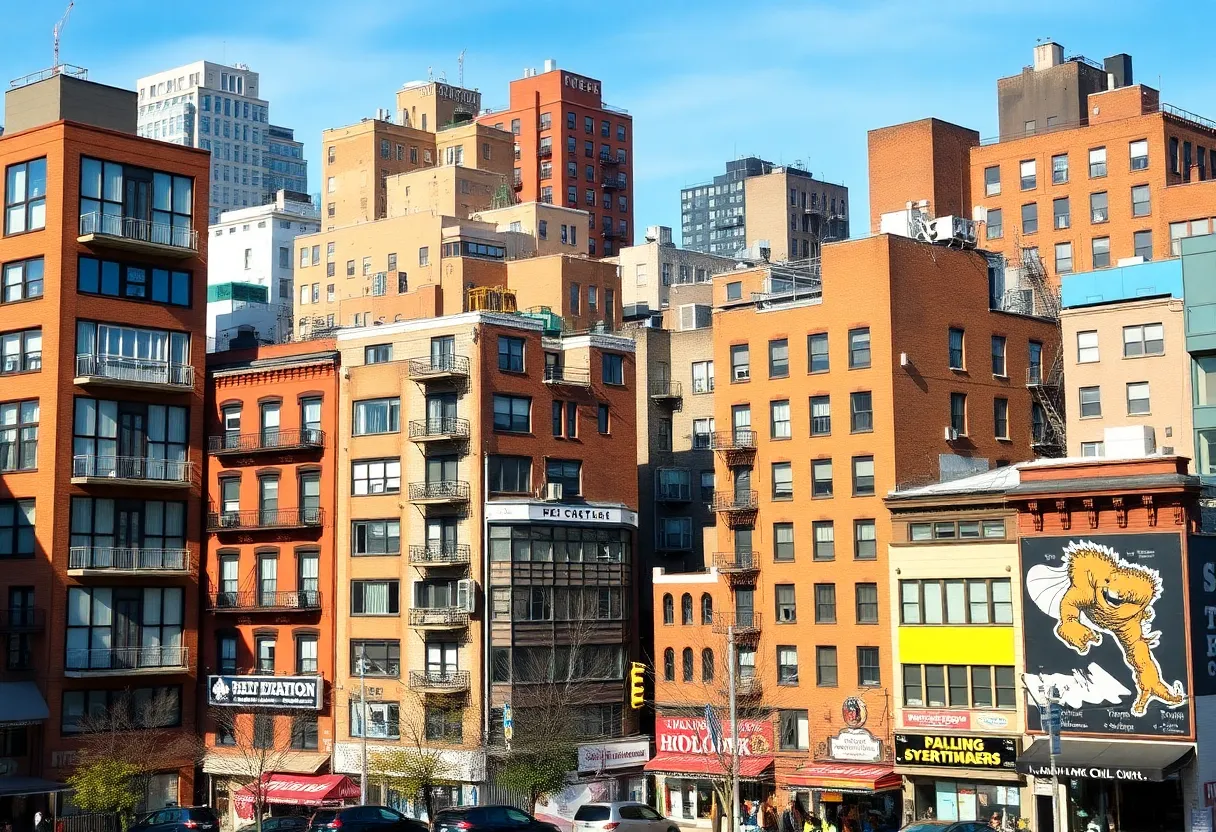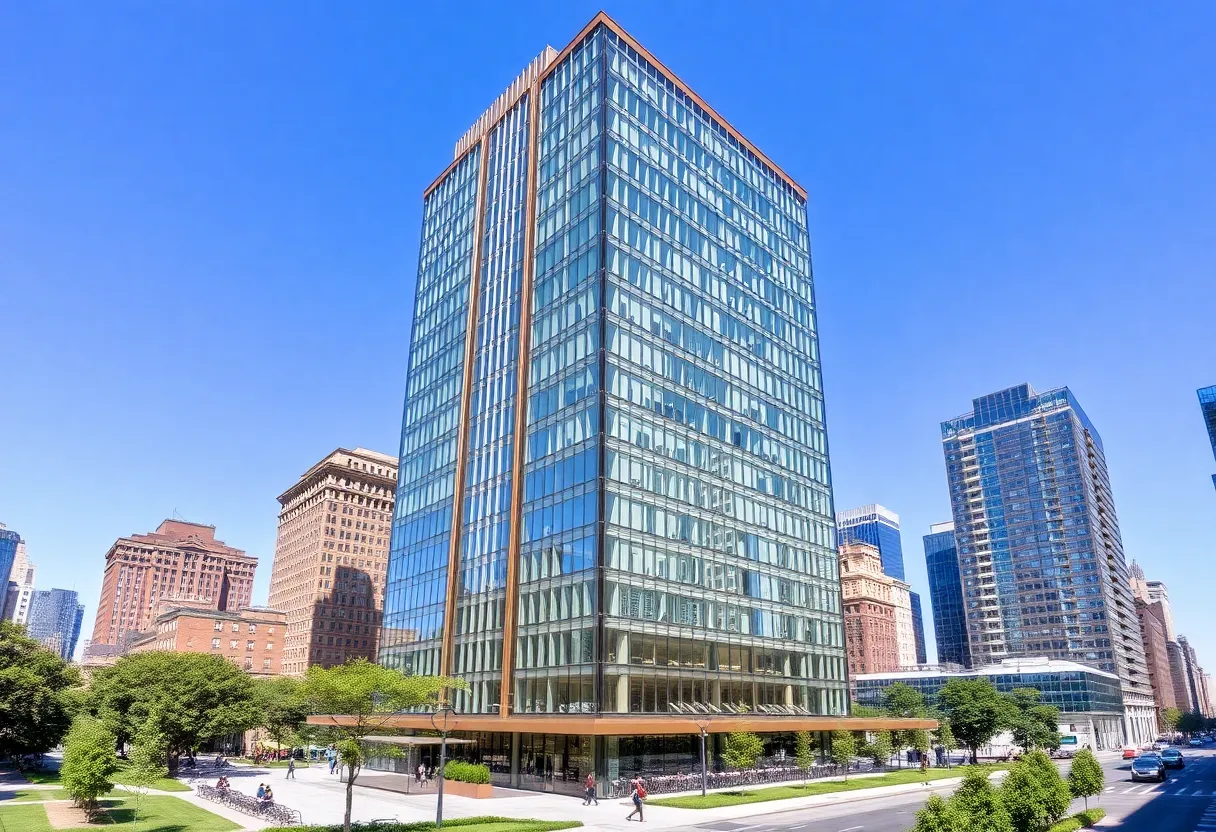News Summary
New York City is moving forward with the Midtown South Mixed-Use Plan, aiming to convert commercial areas into residential developments. The plan could bring approximately 9,700 new homes, with 2,900 designated as affordable housing. However, opposition arises from the New York Fashion Workforce Development Coalition, which fears displacement of local businesses and jobs. Advocates argue the plan addresses housing shortages while supporting community economics. As discussions continue, the balance between affordable housing and preserving local industries remains crucial.
New York City is advancing its zoning plan known as the Midtown South Mixed-Use Plan (MSMX), which seeks to transform commercial areas into residential developments across Midtown South. The plan proposes to dramatically alter 42 blocks between West 23rd and 40th Streets and Fifth and Eighth Avenues for new housing, potentially introducing around 9,700 new homes. Of these, 2,900 are expected to be affordable housing units.
The plan has garnered the support of the Garment District Alliance and several other business improvement districts (BIDs), which argue that the influx of new residents will generate critical foot traffic that benefits local businesses. However, a significant coalition led by the New York Fashion Workforce Development Coalition (NYFWDC) has moved to oppose the zoning changes, claiming it could displace up to 779 businesses and threaten the jobs of more than 5,300 workers.
Critics of the MSMX plan are vocal about their concerns. Representatives from labor unions and local businesses express that the city has gone ahead with the proposal without adequately addressing the viability of local industries, particularly those essential to the fashion and garment sectors. They argue for a revision of the proposed plan, which would include measures to protect existing businesses and create support systems, such as a relief fund for displaced workers and tax relief aimed specifically at fashion-related enterprises.
As the zoning plan awaits a vote from the City Council, it has already passed the City Planning Commission’s review. Advocates for the plan argue it represents a solution to the city’s housing shortage while providing needed support to local businesses. City officials note that rent is more affordable for existing garment businesses, which have been grappling with the lingering effects of previous zoning laws and the economic impacts of the pandemic.
The Garment District has long been a vibrant hub of New York City’s cultural heartbeat—critical for theaters, films, and fashion. Many designers rely on local businesses for their supplies and services, with reports indicating that around 80% of costumes for high-profile events, such as the Met Gala, come from these establishments. The convenient access to essential resources and transportation makes the area undeniably valuable for creative industries.
Local stakeholders emphasize the risk of losing a historical and culturally rich fabric of the city should the zoning changes proceed as planned. Concerns are mounting about the potential demolition of up to 12 sites within the historic Garment Center, which is home to numerous iconic fashion brands that have existed for decades, directly linking them to New York’s artistic scene.
In response to the growing tension, multiple public hearings are scheduled to allow community members to voice their opinions on the zoning changes. Advocates for a balanced approach stress the need for smart planning that can accommodate both the pressing demand for affordable housing and the preservation of valuable local businesses.
The call for a collaborative approach is echoed by a range of community members who recognize the significance of the Garment District’s operational needs. Many local business owners, particularly those who are immigrant-run, highlight that their specific industry requirements cannot be fulfilled in other locations. The ongoing discussions aim to forge a path that supports the livelihoods of garment workers while addressing New York’s housing crisis.
Ultimately, the future of the Midtown South Zoning Plan and its implications for local industries hangs in the balance as the City Council prepares to deliberate on the proposal. Both sides of the debate continue to seek solutions that ensure a sustainable and vibrant economic landscape for New York City.
Deeper Dive: News & Info About This Topic
HERE Resources
Proposed Rezoning Could Transform New York City’s Garment District
Hiwin Group Unveils Plans for 30-Story Mixed-Use Tower in Midtown Manhattan
Transformation of Pfizer’s Former HQ to Apartments
Real Estate Developments in New York City
Long Island City Set for Major Zoning Change
Additional Resources
- amNY: Garment District Small Businesses Fight Rezoning Plan
- Wikipedia: Zoning Law
- PIX11: Garment District Rezoning Proposal Sparks Debate
- Google Search: Garment District Rezoning
- The Business of Fashion: New York Fashion Garment District Rezoning
- Encyclopedia Britannica: Fashion
- WWD: New York City Garment District Rezoning
- Google News: New York Garment District
- Sourcing Journal: New York Garment District Rezoning
- Google Search: New York Fashion Workforce Development

Author: STAFF HERE NEW YORK WRITER
The NEW YORK STAFF WRITER represents the experienced team at HERENewYork.com, your go-to source for actionable local news and information in New York, the five boroughs, and beyond. Specializing in "news you can use," we cover essential topics like product reviews for personal and business needs, local business directories, politics, real estate trends, neighborhood insights, and state news affecting the area—with deep expertise drawn from years of dedicated reporting and strong community input, including local press releases and business updates. We deliver top reporting on high-value events such as New York Fashion Week, Macy's Thanksgiving Day Parade, and Tribeca Film Festival. Our coverage extends to key organizations like the Greater New York Chamber of Commerce and United Way of New York, plus leading businesses in finance and media that power the local economy such as JPMorgan Chase, Goldman Sachs, and Bloomberg. As part of the broader HERE network, including HEREBuffalo.com, we provide comprehensive, credible insights into New York's dynamic landscape.






